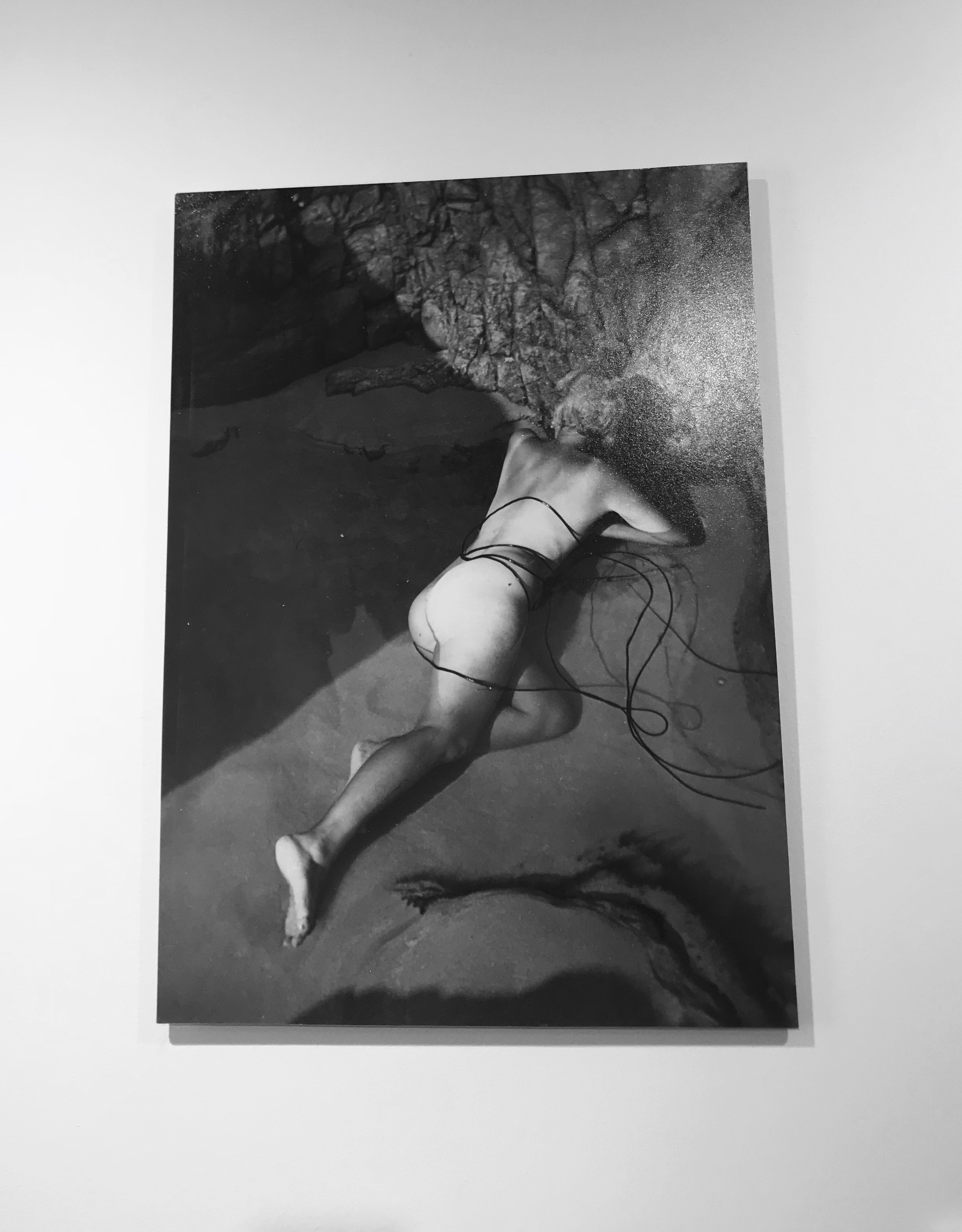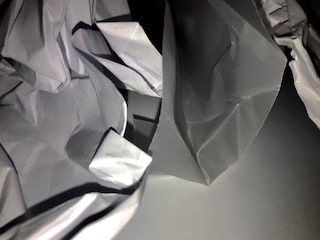Both these images caught my eye when at the exhibition but both for different reasons. Clare’s work all had her in it as the focal point but the positions she took up didn’t overpower the photos they blended in with the surrounding well and even though some of the positions looked uncomfortable they created a delicate feel to the photo, like in the one below. Her clothes also add to this they where clearly thought out, in the photo above she wears a mid-length skirt which adds to the modesty of the photo and how she doesn’t want to be spotted she wants to blend in with her surrounding and not stand out. Whereas I feel the opposite with some of Claude’s work, as she dresses up very boldly to make a statement, but in the photo below I felt differently because her naked body seemed to fit perfectly with the surroundings. The low position meant she could become closer to her surroundings creating a more natural pose. The seaweed wrapped around her is a subtle but genius addition to the photo, it’s as if the water is trying to grab onto her and bring her closer. Even though being naked isn’t subtle, to me it feels delicate and it’s our natural state, so it matches the natural state of the rocks and the sand. Cahun is well known for exploring the world of gender within her work, I feel that Rae has also emphasized that in her work. The two photos above both exhibit a great deal of gender confusion as the people in the photos could be either male or female. Both positions show a lack of control over themselves and how they can’t move a certain way, they are who they are, and they can’t do anything about it, they are stuck that way. Also, the fact that neither of their faces are showing expresses how you can’t define gender by a certain look, facial features don’t have anything to do with your gender, you make your gender, your looks don’t define you.










